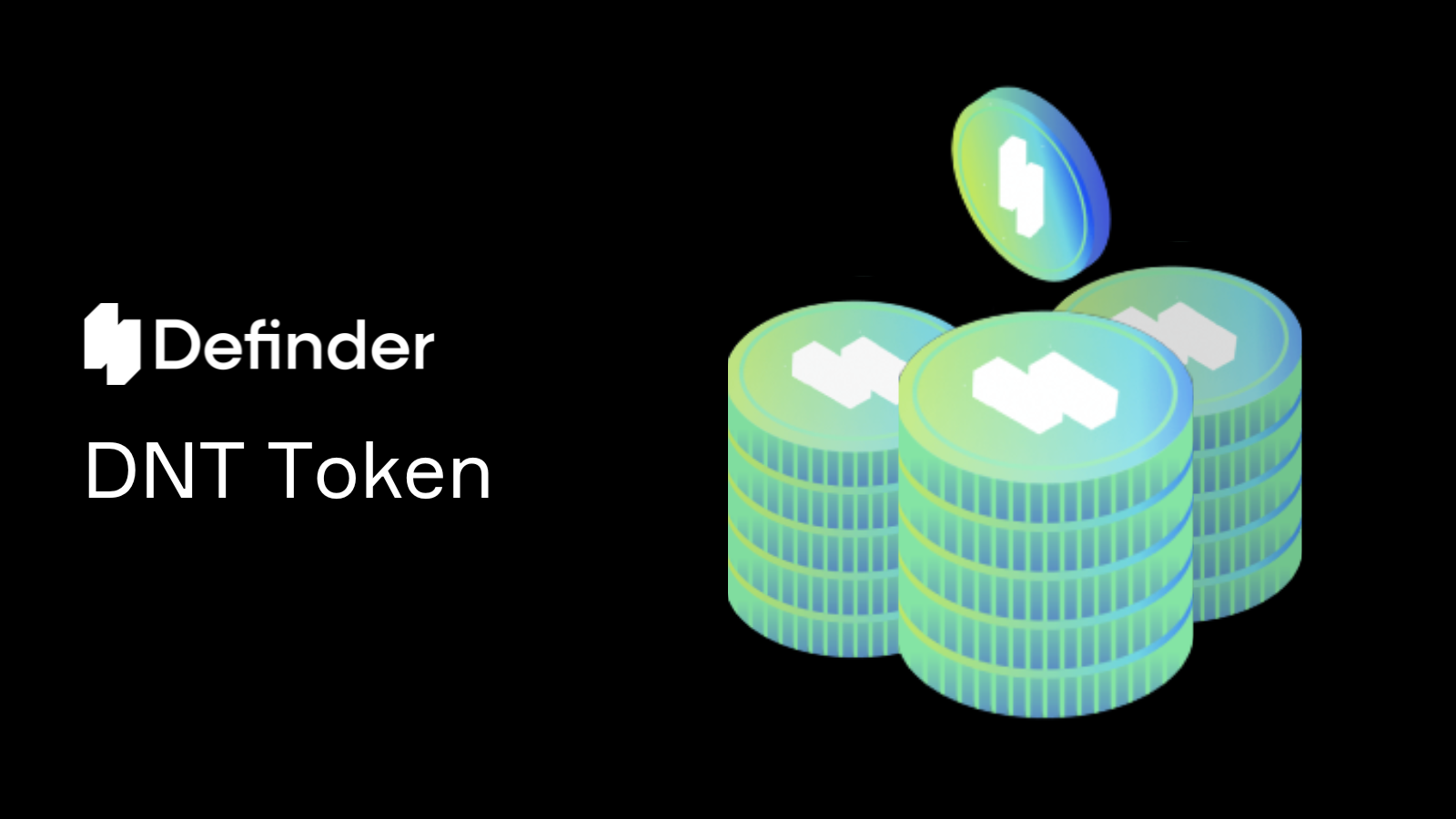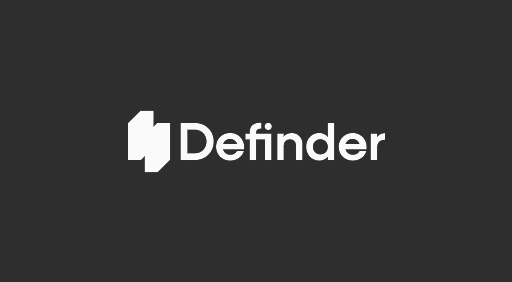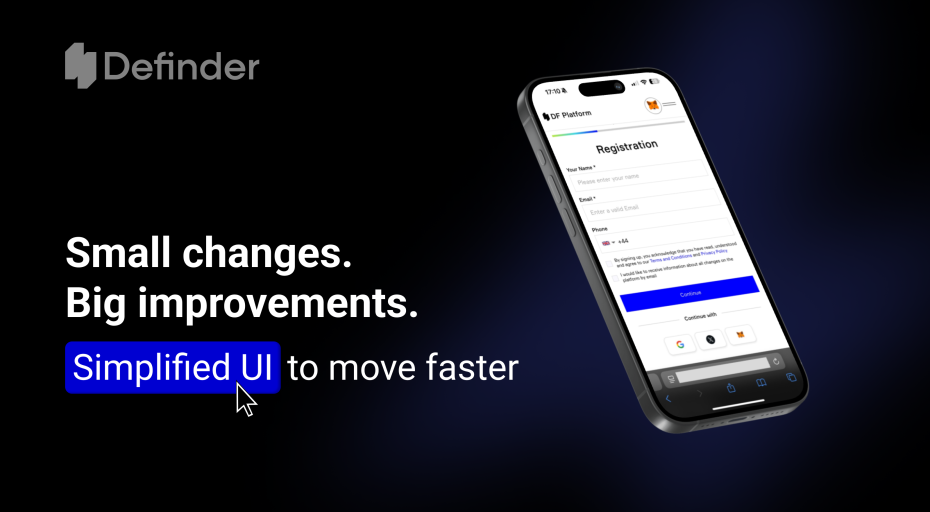
Definder DNT Token
Blockchain technology opens up opportunities for creating a wide range of new business models. One of the main reasons why it has become so successful is the use of tokens. Today we will talk about the difference between utility and security tokens, as well as the place of our DNT token in the market. Understanding this difference will allow you to avoid risks when investing and answer your questions why DNT is a utility token and not a security token.
What are the different types of tokens?
There isn’t a standardized mechanism in place yet to categorize tokens. However, the US Securities and Exchange Commission (SEC) and the Swiss Financial Market Supervisory Authority(FINMA) are taking moves in this direction .
Both organizations categorize tokens into two main groups:
- “Investment” (Security) tokens – to a certain extent, similar to securities.
- “Service” (Utility) tokens – give access to the services provided by the project.
But there is one key distinction between the SEC and FINMA: the SEC is more concerned with connecting tokens with securities, whereas FINMA is more concerned with the tokens’ economic purposes.
Let’s take a closer look at the key features of different types of tokens.
Investment tokens (Security tokens, SEC) / Asset tokens (FINMA)
These types of tokens grant the right to collect dividends, interest payments, and underlying assets. They work economically similarly to stocks, bonds, or derivatives. Important disclosure standards exist, such as those for corporate reporting. The SEC also has extensive authority to regulate the securities industry and stop unlawful practices like insider trading.
Important Know Your Customer (KYC) and Anti-Money Laundering (AML) standards must be followed by all securities issuers. As a result, token holders must engage in a protracted, bureaucratic process.
Service tokens (Utility tokens, SEC, FINMA)
The Utility Token is a digital asset that is used to fund the network by providing buyers with a guarantee that they can consume some of the network’s products. Unlike the Security Token and shares, it does not confer ownership of a part of a company. Therefore, there is no need to go through full AML and KYC verification and every user can use this token without restrictions, regardless of legal regulation.
In other words, it is a digital asset that serves as the right to use the services and products of a particular network and is not considered to be a fractional or legal ownership of a company or a share in a company’s income.
What category is the DNT token in?
DNT is a utility token that underlies the Definder ecosystem. It is used to carry out all operations on Definder products (DF Platforms, etc.).
The DF Platform is the first in the Definder Network product line and is a means of decentralized financing of businesses and assets of the real sector of the economy using a crowd loan. Platform based on the DAO tenet that the community of a particular project makes all choices. A cloud-based program called DF Platform offers users information services (asset owners and investors). Our mission is to make decentralized finance accessible.
DNT is limited to 21,548,097 tokens and operates on the Binance Smart Chain network using the BEP-20 protocol.
The main ways to use the DNT utility token:
- Payment of a symbolic commission at the Voting stage in a specific “crowd loan target”. Each user, if they wish to reserve a share in project financing, must make a transaction in DNT to the specified wallet in the project card and indicate the amount of planned financing for the project. The user gets direct access to communication with the creators of the project in the workspace after the donation.
- Formation of an insurance pool in order to hedge risks for the period of contribution to the crowd loan. DNT will be blocked for the duration of the crowd loan associated with a specific purpose and returned at the end of the loan period (maturity date). This will remove some of the tokens from circulation.
The project will accept stable coin investments. Stablecoins are digital currencies whose value is tied to a certain fiat currency (i.e., the dollar or the euro) or tangible object (for example, gold). The coin possesses all the characteristics of a cryptocurrency, but unlike ether or bitcoin, it is not volatile or prone to sudden price changes.
We believe that using USDT (ERC-20) for our consumers would be the best choice. According to CoinMarketCap, Tether (USDT) has the greatest market cap among stablecoins and ranks third among all cryptocurrencies behind bitcoin and ether. The project’s founder is free to choose which stablecoin he wishes to pull in at the time of funding.
What are the plans for the DNT?
Add more ways to use the token. The more utility a token has, the more reasons to hold it, the fewer sellers and more buyers.
We also plan to launch liquidity pools based on DNT.
A liquidity pool is a kind of vault into which market participants pool their assets in order to collectively provide a very large supply of liquidity for all who wish to exchange this asset. In the traditional financial system, large banks act as such pools, they manage the funds of a large number of depositors.
In its basic form, the liquidity pool contains 2 tokens and thus creates a new exchange market for these assets. When a new pool is created, the first liquidity provider sets the starting exchange rate for assets within the pool. Each provider must deposit an equal amount of both tokens into the pool.
The decentralized exchange takes a commission from each transaction in which the pool participates and distributes it to all pool members proportionate to their share of the transaction. As a result, the provision of liquidity generates income. Basic liquidity pools like Pancake Swap use a constant that is calculated as the product of the amount of both tokens in the pool. Thus, the pool can always provide liquidity. It’s just that the less A remains, the more expensive they become, and the cheaper B tokens become. So if someone buys a lot of DNT in a DNT/USDT pair, he decreases the supply of DNT and increases the supply of USDT, which is immediately reflected in the rate exchange. The larger the volume of the pool in relation to the size of the transaction, the less this transaction affects the price.
Large pools of liquidity create a more stable environment where each trade has little effect on the movement of the exchange rate. This is the ultimate goal of both market participants and liquidity providers (recall, they earn on commissions from transactions, more transactions – more income).
At this stage, in order to attract more projects to the platform, it was decided to direct the liquidity of our users more to the projects themselves. And leave the mechanism of simple staking of our coin. In the form as it is described – an insurance pool. Upon reaching a certain number of projects, we will launch the Pancake Swap liquidity pool model.
Summing Up:
The DNT will be used to form an insurance pool for decentralized community-run and managed crowd loans. All transaction fees applicable to the DF platform will also be paid to DNT. Projects will be funded in stablecoins. In the development of the DF Platform and other Definder Network products, voting and other rights may be assigned to DNT.




